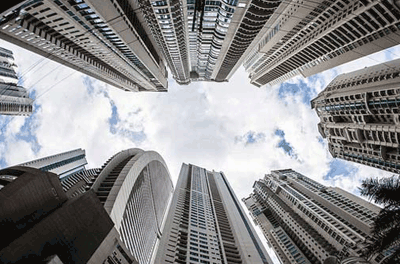GET IN TOUCH
- Please wait...

The Bangladesh economic story exemplifies that of an underdog which had been continuously berated and belittled by the naysayers, as it struggled to maintain its growing population and at the same time, keeping away from myriad obstacles to growth. From being termed a ‘bottomless basket’ to being earmarked as the most corrupt country, Bangladesh still has to bear the ignominy of the Least Developed Country (LDP) tag.
Backdrop
Post-independence, the country was in tatters, as the nine months war had a significant dent on the country’s infrastructure. The situation was exacerbated by instances of famine in mid 70s and political instability didn’t help either. With liberalization of business in 1980s, many entrepreneurs entered the fray starting new ventures. Steady industrialization followed and the formidable RMG sector took root during this period. In 1980s, the economy slowly transitioned from an agro-based economy to the one dominated by secondary sector.
The early 90s saw further liberalization as RMG export expanded on the back of RMG export growth along with growing manpower export market. Several other industries also came up including: Pharmaceutical, Leather, Frozen food etc. Export driven growth was propelled by the availability of inexpensive labor along with favorable tax regime.
Status Quo
Over the last 10 years, the economy has maintained growth within 5-6% range despite spate of natural calamities and political instabilities. In the recent past, the global financial crisis in 2008 also had minimal impact on the country’s progress, despite recessionary phases in US and EU, major markets for Bangladeshi products.
Over the last one year, Inflation has remained stable at 7% despite frequent supply chain disruption due to political unrest. Reining of inflation is attributed to declining growth of non-food inflation e.g. Rent, which has contributed to lower inflationary pressure. Bangladesh Bank has also adopted a tight monetary policy which has further led to lower inflation.
Exports have been riding on the blossoming RMG sector which has clocked USD 23 billion over 2013. Remittance revenues have grown to the tune of USD 12 Billion, albeit at a slower pace. However, import growth has declined at a relatively higher rate which contributed to positive current account balance.
Why Bangladesh is forging ahead?
Bangladesh economy has undergone rapid changes over the last decade with growing export driven by RMG sector, along with flourishing manpower export, culminating in higher economic growth. These two economic drivers have been inclusive, given that the main economic agents are drawn heavily from the lowest rungs of the country’s socio-economic strata. This has resulted in higher disposable income for population at the ‘bottom of the pyramid.’
Achievements so far
According to latest Human Development Index (HDI), prepared by UNDP, Bangladesh has performed exceptionally well with respect to life expectancy, education, and income indices; in some cases, surpassing the achievements of its economically advanced neighbor, India, even. Consequently, Bangladesh has successfully achieved most of the Millennium Development Goals (MDG) set by the UN and is on course for achieving the Sustainable Development Goals (SDG).
Despite fears of losing market share post MFA regime, the RMG sector has performed exceptionally well by steering ahead of its competitors. Export growth trend continued despite global economic downturn and major industrial accidents (Rana plaza & Tazreen Fashion). Currently, Bangladesh has maintained the position of the second biggest exporter, after China, in the global apparel market.
Bangladesh has been receiving attention from international domain over the years due to steady performance despite global economic upheaval. Goldman Sachs has included Bangladesh as part of the Next Eleven countries, which have potential for continuing growth in the coming years. JP Morgan has identified Bangladesh as part of Frontier Five countries having the potential of achieving phenomenal growth.
Two international rating agencies, Moody’s and S&P, have been conducting Bangladesh’s sovereign rating for the last four years. In all the years, Moody’s has rated Bangladesh BB – better than all neighboring countries, except India. Similarly S&P has also given favorable rating of Ba3, which is higher than all other neighboring countries, except India.
Upcoming Challenges
Concluding Remarks
Bangladesh has long operated under the wings of major regional players. It’s about time they come out of their shell and exert themselves economically. The conditions are ripe for catapulting the country as a middle-income nation.
Our experts can help you solve your unique challenges
Stay up-to-date with our Thought Leadership and Insights